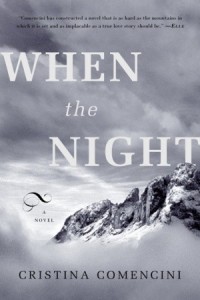Westlake Soul by Rio Youers
 Wednesday, April 25, 2012 at 8:10AM
Wednesday, April 25, 2012 at 8:10AM 
Published by ChiZine Publications on April 10, 2012
After a surfing accident, Westlake Soul woke up with "the most powerful mind on the planet, but a body like a wet paper bag." According to his doctor, Wes is in a persistent vegetative state. Wes' parents take him home, resisting his doctor's suggestion that it might be better to let him die. Yet Wes is cognizant, aware of his surroundings; he just can't express his awareness or interact with those around him. At least he can't interact in a conventional sense. West has some new abilities: astral projection, telepathic communication with animals, fluency in all languages, but not the ability to communicate with or control humans (although he can read their thoughts, something he rarely does). He can watch Angelina Jolie take a shower, he can hover in the background while Bruce Springsteen and Elvis Costello jam at a party, but he can't tell anyone that his brain is still alive. He struggles frequently with death, in the form of Dr. Quietus, while his parents cope with the pain of living with an apparently brain-dead child. You know where this is going, right?
Wes is convinced that he will eventually overcome his disabling condition, that he will speak and surf again, while the reader suspects that Wes is unable to accept his fate, to process the knowledge that his consciousness will always be trapped inside a dysfunctional shell. When things get tough for Wes, he projects himself to a calmer place: a rainforest, a waterfall, the moon. Of course, the reader wonders whether this is a defense mechanism, blissful imagination replacing horrid reality.
There are moments when Westlake Soul strives to be literary but most of the time the prose is active and edgy, conveying the story's emotion rather than the beauty of language. Emotions pervade the story. Love is at its center, but sorrow and loss and anger and fear provide the context. Wes remembers the love of a girlfriend who, understandably, is now gone from his life. He experiences a new love for his second caregiver. He loves his family and, of course, the dog whose mind he can now read. These people (and the dog) love Wes in return, making the decision they must reach all the more difficult. It is a testament to Rio Youers' skill that the emotions he evokes are sometimes so powerful that story becomes difficult to read.
Although the novel is driven by love, it's more fundamentally about life and death, with life at the forefront. Learning to live, according to Wes, means learning to conquer fear. As I was reading Westlake Soul, I had some concern that it would turn into a polemic, fuel for the wrongheaded politicians who condemned Terri Schiavo's husband for discontinuing her life support, who thought they knew more about her cognitive ability than her doctors did. That concern was unwarranted. The novel doesn't advocate for the religious right. Quite the opposite, given Wes' nonjudgmental nature and his realization that as important as it is to fight for life, it is equally important not to fear death.
There are times when Westlake Soul dances on the edge of melodrama. There are times when Wes is so unselfish and forgiving as to strain credulity -- at least until he does something, late in the novel, that reveals a minor but all-too-human flaw. Despite its faults, Westlake Soul did what good literature should do: it moved me. From the beginning to the end, Westlake Soul touched me emotionally in a way that cheesy melodrama never does. I tip my hat to Youers for writing such a powerful and convincing story.
RECOMMENDED



